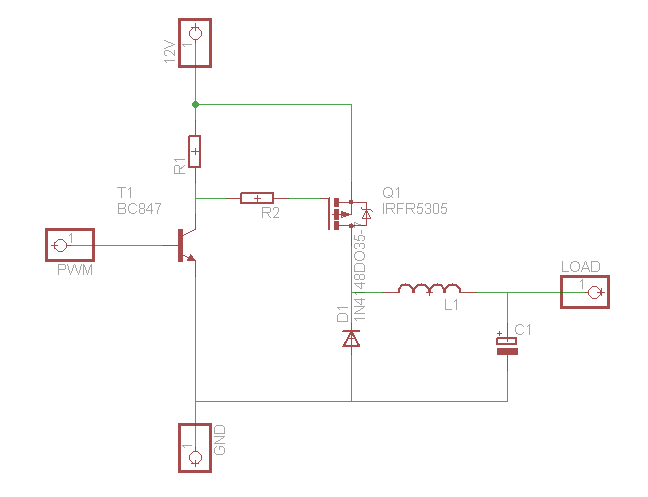while 555 contest is long gone, I am still debugging my device, where I already abandoned 555 itself :-)
At the moment, I am driving PC fan from an PWM (30kHz) signal from atmel uC.
I am powering P-MOSFET with a simple 1-BJT-transistor-"driver". Output is filtered with an 22uH inductor + 330uF cap. Surely I have kickback diode in place.
The problem I have is while I have 256 "levels" of PWM, I am getting most of output difference somewhere in the 1-20 range. It looks like even short pulses have the "power" to drive the fan at full power.
1) How can I make it "less" powerful? Will I have more powerful fans underpowered then?
2) On the drain of the mosfet I see some 1-3Mhz ringing with some 5V amplitude, and while it all works, I don't like it (no ringing on the source or gate). What causes it and how should I fight it?
Update: R1 - 1kOhm R2 - 47Ohm MOSFET - is PMOSFET from motherboard Diode is some medium-size Schottky one, with 0.2V drop.

